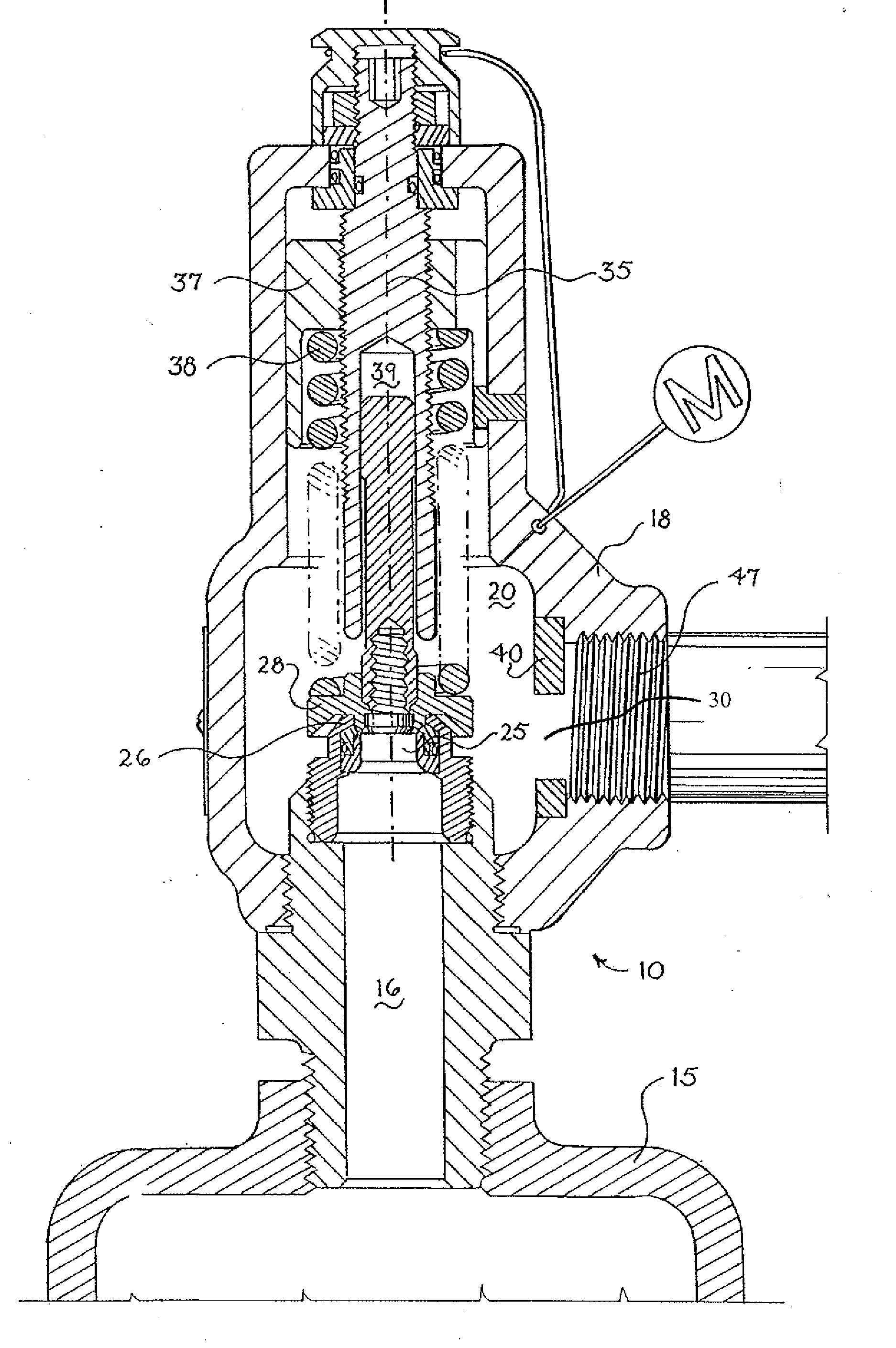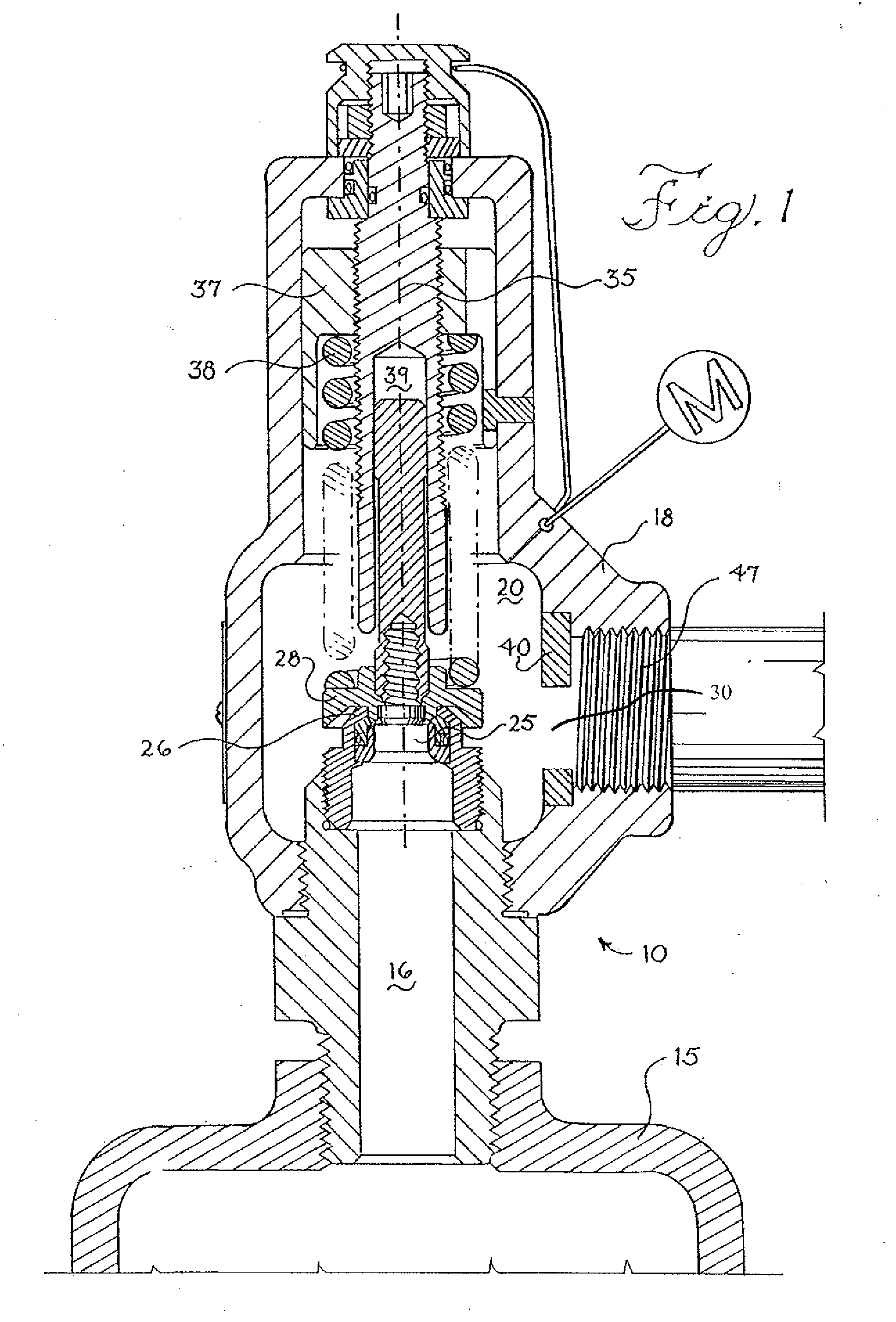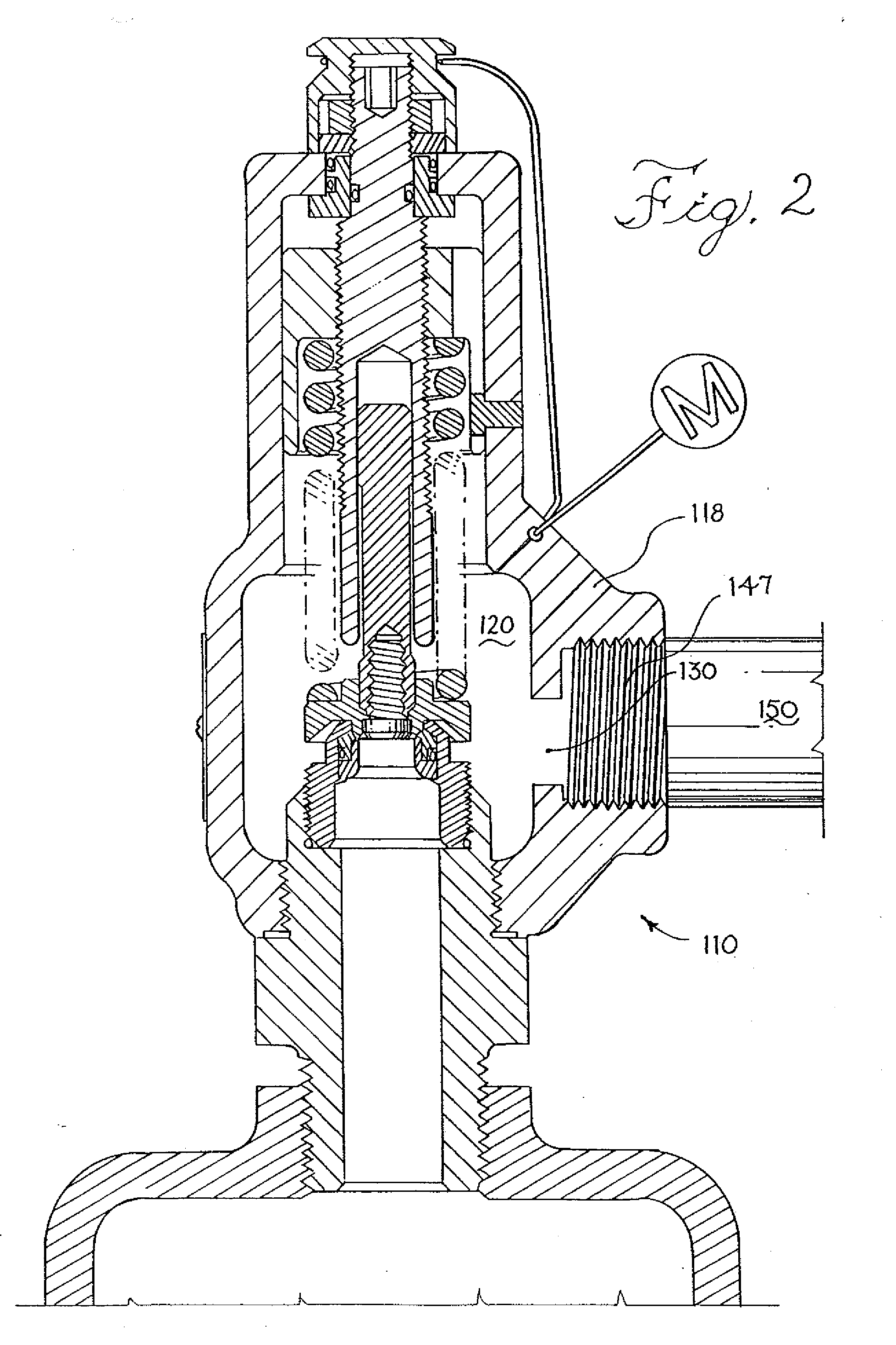Safety relief valve having a low blow-down value and spring therefore
a safety relief valve and low blow-down value technology, applied in the field of safety relief valves, can solve the problems of no longer sonic flow out of the secondary orifice, and achieve the effects of preventing built-up downstream back pressure, low blow-down value, and low blow-down valu
- Summary
- Abstract
- Description
- Claims
- Application Information
AI Technical Summary
Benefits of technology
Problems solved by technology
Method used
Image
Examples
Embodiment Construction
Determining the Size of a Secondary Orifice
[0072] Referring to FIG. 6, a non-limiting example is provided to show a preferred method for experimentally determining what size to make a secondary orifice 430 in a trial snap-type low blow-down safety relief valve 410.
[0073] The trial snap-type low blow-down safety relief valve 410 is designed for specified operating conditions. For example, the trial snap-type low blow-down safety relief valve 410 may be designed to operate with a maximum length of from about 15 feet to about 20 feet of outlet piping 450 having one elbow (not shown). The outlet piping 450 is of the type with schedule number 80, since this is the most common seamless pipe for the pressure ranges addressed in this non-limiting example. The trial snap-type low blow-down safety relief valve 410 may also be designed for a set pressure of 100 psia that will relieve air from a pressurized system when the pressures therein exceed the set pressure. In a typical scenario, the ...
PUM
| Property | Measurement | Unit |
|---|---|---|
| pressure | aaaaa | aaaaa |
| pressure | aaaaa | aaaaa |
| pressure | aaaaa | aaaaa |
Abstract
Description
Claims
Application Information
 Login to View More
Login to View More - R&D
- Intellectual Property
- Life Sciences
- Materials
- Tech Scout
- Unparalleled Data Quality
- Higher Quality Content
- 60% Fewer Hallucinations
Browse by: Latest US Patents, China's latest patents, Technical Efficacy Thesaurus, Application Domain, Technology Topic, Popular Technical Reports.
© 2025 PatSnap. All rights reserved.Legal|Privacy policy|Modern Slavery Act Transparency Statement|Sitemap|About US| Contact US: help@patsnap.com



